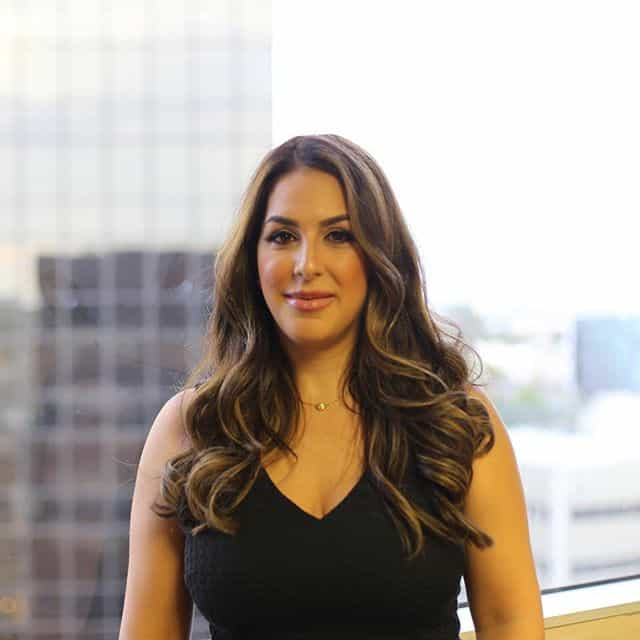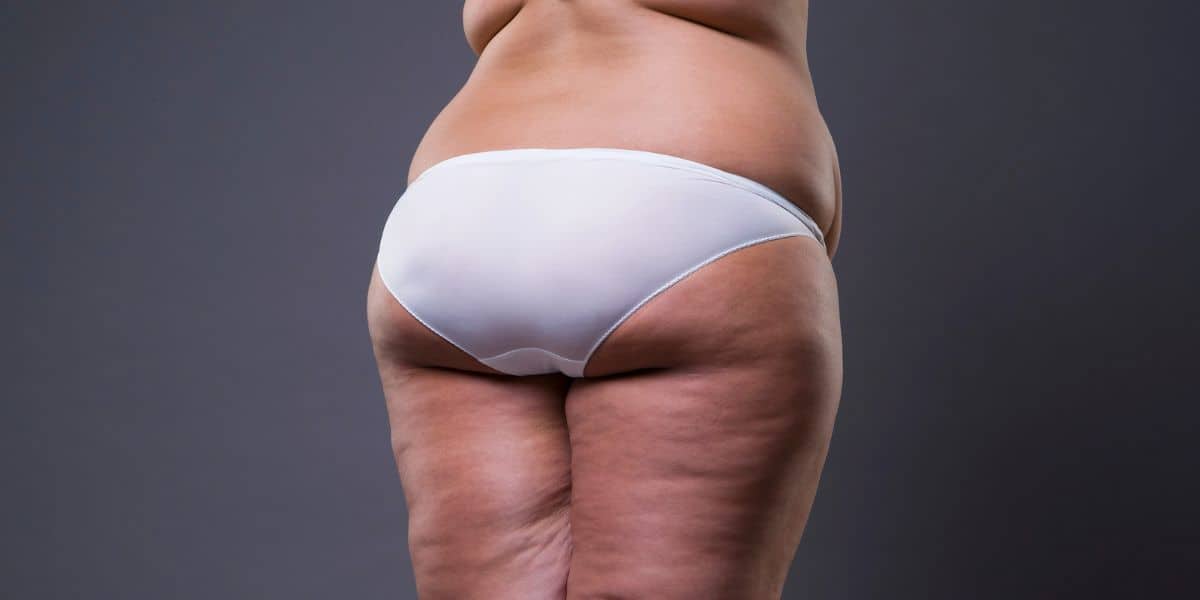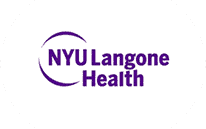Dr. Saber’s Blog
Avoid a Tummy Tuck Revision: Get Great Results the First Time
According to the American Society of Plastic Surgeons, over 97,000 tummy tucks were performed in 2020. Tummy tuck plastic surgery can greatly enhance a patient’s comfort, appearance, and self-confidence. But there are abdominoplasty risks, and a botched tummy tuck can cause not only emotional distress but physical problems.
When a surgical procedure doesn’t work out, there is always revision plastic surgery to fix any resulting problems. However, the ideal outcome is for your first surgery to produce the desired outcome.
To make sure you don’t end up needing corrective surgery, we’re going to discuss why tummy tucks go wrong and how to choose the right plastic surgeon.
What is a tummy tuck?
A tummy tuck (medically known as abdominoplasty) is a plastic surgery procedure. This particular surgery is designed to remove excess skin and tissue from the abdomen, tighten the abdominal muscles, and (if necessary) remove excess fat deposits with liposuction (“lipo”).
There are a few cosmetic procedures people use under the blanket term “tummy tuck”:

Full Tummy Tuck
This cosmetic surgery removes excess skin and tissue, tightens the abdominal muscles, and does any necessary body contouring. The belly button is sometimes repositioned during a full tummy tuck to create a natural-appearing belly.
Mini Tummy Tuck
A mini tummy tuck may be recommended for those who have less excess tissue and skin to be removed. This particular procedure only removes skin from below the belly button and doesn’t require the belly button to be repositioned.
Panniculectomy
This particular plastic surgery procedure is generally for patients who’ve lost a large amount of weight, leaving them with an “apron” of excess skin. This abdominoplasty procedure is more complex due to the large amount of tissue being removed. It does not involve contouring or adjusting the abdominal muscles.
Tummy Tuck Gone Wrong
Of course, no surgery is totally devoid of potential problems, so you need to be aware that there are tummy tuck risks.
So, is a tummy tuck dangerous? I can say with absolute confidence: when done by a qualified board-certified and very experienced surgeon, it is a procedure with a great safety record.
The best way to avoid complications and the need for a revision tummy tuck is to make sure you’re working with a board-certified plastic surgeon.
Unfortunately, there are too many “cosmetic surgeons” out there who aren’t fully qualified for the surgeries they’re performing. I’ve seen some very unfortunate results of these surgeries as these patients come to me for revision surgery.
On RealSelf.com, a site for researching and reviewing cosmetic surgeries and surgeons, one unfortunate patient shared her experience of a tummy tuck gone wrong. Her first tummy tuck fail resulted in cosmetic issues, so she had a second surgery. Her second surgery left her uncomfortable and with functional concerns.
A (slightly sensationalized) article from the UK tells the story of a woman who got a tummy tuck in 2013 and was left with an unpleasant flap of excess skin below her waist.
In more extreme cases, a botched tummy tuck can result in medical complications. Infection, seroma (fluid buildup), and clotting are just a few potential risks.
The Importance of a Board-Certified Plastic Surgeon
The best way to avoid complications and the need for a revision tummy tuck is to make sure you’re working with a board-certified plastic surgeon. These are medical professionals with at least 14 years of higher education, including special training in reconstructive and cosmetic surgery.
Furthermore, by being board-certified, a plastic surgeon has admitting privileges at local hospitals. So, in the rare chance a complication occurs during surgery, your surgeon can handle it quickly and efficiently. As opposed to a non-board-certified surgeon, who would have to call you an ambulance and couldn’t provide care for you at the hospital.
A Surgeon You Can Trust

What we can learn from the unfortunate anecdotes of patients with botched tummy tucks is: don’t blindly trust what a cosmetic surgeon tells you. During your consultation, you should feel comfortable with your surgeon, they should thoroughly explain all potential risks, and you should be on the same page about your goals and expected results.
If you have concerns about what your surgeon tells you, seek a second (or even third!) opinion. The best time to get good results is in your first surgery. While revision surgery can improve bad results, it does come with extra difficulty. A second surgery has to work around the scar tissue and changes from the first surgery in addition to improving upon it.
Before agreeing to surgery, make sure you and your surgeon are on the same page about why you want a tummy tuck. A patient who’s self-conscious about stretch marks will have different needs than someone wanting to look the way they did before pregnancy. A patient with extra folds of skin from massive weight loss may need a different tummy tuck procedure than someone worried about their muffin top.
When looking for a plastic surgeon, look for patient testimonials. Look at what former patients say about their results, post-op care, and overall experience. You have the ability to mitigate many potential tummy tuck risks and complications by doing your due diligence when picking a surgeon.
I’ve never had to do a revision for one of my own patients. However, I have done revisions for patients of other surgeons.
Dr. Saber
Revision Tummy Tuck
The specific surgical procedure you’ll need depends on what part of your tummy tuck needs revision.
However, if you’re unhappy with your tummy tuck surgery results, the first step is waiting. You’ll have to avoid most physical activity for the first two weeks and wait about six weeks before fully resuming normal activity. But it can take up to six months for final results to be visible, depending on your procedure.
If you’re fully recovered from your primary tummy tuck and dealing with cosmetic or medical problems, it may be time to explore a revision.
Common problems that need revision are:
Inadequate Skin and/or Tissue Removal
An improperly performed tummy tuck can leave a patient with residual loose skin or fat deposits around the midsection. Liposuction can be helpful to remove remaining fat, and a revision tummy tuck can excise remaining skin or tissue.
Distorted Belly Button
Because the belly button is relocated during a full tummy tuck, it can sometimes end up looking unnaturally too big or too small. If a tummy tuck revision is required, we can also adjust the belly button. Otherwise, umbilicoplasty (belly button revision surgery) can be used to fix the appearance of the belly button. Luckily, umbilicoplasty has less recovery time than a tummy tuck.
Unpleasant Scar
My goal during surgery is to decrease the future visibility of any scarring. A poorly planned surgery may leave the scar a bit too high on the abdomen, making it easily visible in swimsuits or crop tops. Poor incision closure can also leave a more visible scar. There are a few techniques we can discuss depending on the specifics of your scarring.
Is a tummy tuck even worth it?

Everyone deserves to feel comfortable and confident in their body. For many, cosmetic surgery is the path to that confidence. The risks may seem daunting, but that is why I promise to always be 100% honest with my patients.
During your initial consultation, I’ll go over all possible risks as well as your expected outcome. It’s important to me that my patients make fully informed decisions and that we’re both on the same page about your results.
In the hands of a board-certified plastic surgeon you trust, you can enjoy a lifetime of benefits from a properly performed tummy tuck.
Why choose Dr. Saber for Revision Tummy Tuck Surgery in the Los Angeles area?
If you have had a tummy tuck gone wrong, a tummy tuck complication, or wish to explore revision plastic surgery (plastic surgery correction), you are welcome to consult with us.
Dr. Sepideh Saber, MD, FACS offers a more sensitive, female perspective for patients of all ages, genders, and orientations. Patients of all ages and from all walks of life have praised not only their outcomes but her caring, thoughtful approach.
Dr. Saber graduated from Stanford University’s world-renowned medical school and did her reconstruction and plastic surgery residency at the University of Southern California (USC). She then completed a fellowship at New York University (NYU) in the extremely challenging and delicate area of hand surgery, as well as microsurgery.
To get in touch, call (877) 205-4100 or schedule a consultation online.
Our practice takes our patients’ safety very seriously. Our facility’s Covid-19 patient safety procedures exceed all CDC and World Health Organization recommendations. Masks are required in our office at all times during the coronavirus pandemic.
The practice of Dr. Saber is located in Encino, CA for patients throughout the Los Angeles area. We are also convenient to Encino, Woodland Hills, Sherman Oaks, Calabasas, Burbank, Glendale, Hidden Hills, Agoura Hills, Northridge, North Hollywood, Malibu, Topanga, Canoga Park, Reseda, Valley Glen, Chatsworth, West Hills, Winnetka, Universal City, Bel Air, Beverly Hills, Downtown Los Angeles, Silverlake, and Echo Park.
- The Skinny on BBL Sagging: Why It Happens and How to Prevent It - April 29, 2025
- Recovering From a Mommy Makeover: Dr. Saber’s Week-by-Week Guide - November 29, 2024
- Male Chin Augmentation: Is it For You? - October 25, 2024

























